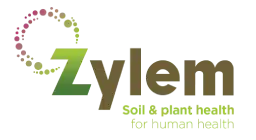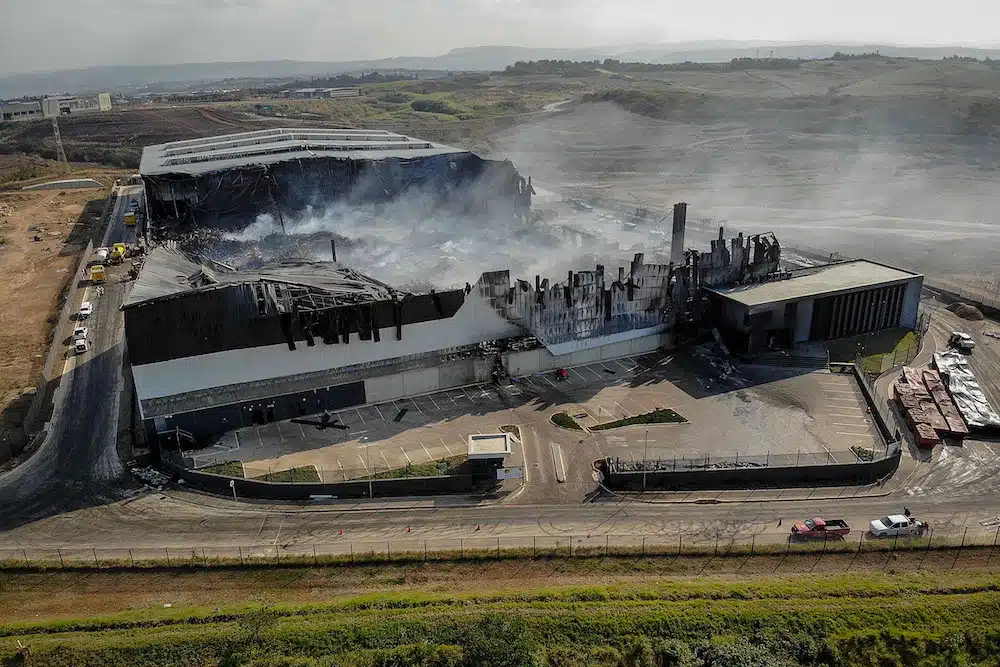A choking blanket of smoke, thousands of dead fish and marine creatures washing up on the shores North of Durban—these are just some of the visible impacts after firefighters attempted to put out a blaze at agrochemical giant UPL. The facility was set alight on 12 July during civil unrest, and residents, wetlands, rivers and beaches have paid the price.
We now know that UPL was storing large quantities of chemicals that are banned elsewhere in the world but not in South Africa. But even the firefighters called on to extinguish the blaze were unaware they were walking into a hazardous chemical fire, putting their lives at risk and hampering firefighting efforts. This also meant that they were not aware of the danger of dousing these chemicals with water. Many of the chemicals’ safety data sheets specify that water should not come into contact with these products and that water used for firefighting should be contained. Unfortunately, this was not the case.
A significant volume of water was used to extinguish the fire, causing water, contaminated with the toxic soup of insecticides and herbicides, to flow into a wetland, the Ohlanga River, the Umhlanga Nature Reserve and into the sea. To date, over three-and-a-half tonnes of dead fish and sea life have been collected from the Ohlanga River and the beaches.
In August, amaBhungane revealed a list of the extremely toxic contents found in the UPL factory. The long list of deadly pesticides, herbicides and intermediate products in the burnt-down warehouse contains several chemicals that are banned in the EU, China, Sri Lanka and other countries.
- More than 40,000 litres of paraquat-based herbicides which have been banned in more than 50 countries, including the UK, China, Switzerland and Thailand;
- Roughly 150,000 litres of atrazine-based products and another 30 tonnes in dry form. Atrazine is banned in 31 countries, including the EU;
- 36,000 litres of chlorpyrifos-based products, which are banned in the US and EU;
- Almost 92 tonnes of mancozeb-based products which are banned in the EU;
- 141,000 litres of 2,4-D-based products and 51 tonnes in dry form, banned in Vietnam, Norway and Mozambique;
- More than 37 tonnes of products using maleic hydrazide, which is banned in the EU except under exceptional circumstances and also banned in India; and
- More than 26 tonnes Masta 900, an insecticide containing the “very potent neurotoxin” methomyl, which is banned in India, where UPL is headquartered, and for which “contact with skin, inhalation of dust or spray, or swallowing may be fatal”.
Whether or not UPL had the authority to house all these chemicals in such large volumes is questionable. But arguably, the most disturbing part of all is that apart from the environmental atrocity unleashed by this fire, these toxic chemicals were bound to be unleashed onto soils and into the air across South Africa anyway, albeit in a more controlled manner.
If this environmental devastation is caused by the burning of this chemical plant, what are these chemicals doing to the soils that are being “treated” with them, and consequently to the food that is being produced?
Why does South Africa continue to permit these environmentally disastrous chemicals that are banned in so many parts of the world?
We feel that it’s time to expose and challenge the fact that our agricultural sector continues to deposit tons of these kinds of chemicals into our environment.
According to L.P. Quinn et al, South Africa has more than 500 registered pesticides and is one of the four largest importers of pesticides in sub-Saharan Africa. Yet these numbers aren’t easy to come by. There is an extreme lack of transparency in the local pesticide market. In fact, there is no public register that lists information on all the pesticide products and active ingredients registered in South Africa.
The UPL disaster has brought this issue to light, and it’s now time for everyday South Africans to question the quantity of toxic chemicals we are exposed to in our food, atmosphere, water and environment.
| “There is a clear absence of an effective legislative framework to regulate agrochemicals in South Africa, and this results in consistent and systematic breaches of human rights.” Advocate Susannah Cowen, a member of Thulamela Chambers |
There is a better way
Reducing chemical inputs by focusing on soil health and sustainable farming methods is a topic we have covered multiple times on our blog, as it forms the basis of our business: soil & plant health for human health.
By regenerating the soil, we can grow healthier plants that are less vulnerable to pests and diseases by default.
You may also be interested in: Biological Pest Control
At present, the South Africa Agrochemical Market is projected to register a compound annual growth rate (CAGR) of 3.9% from 2021-2026. We need to start seeing this number move the other way. People need to be made aware that there is an alternative to dousing fields with poison, and the Government should be doing more to incentivise sustainable farming.
FURTHER READING:
The Problem:
CIRCLING THE ISSUE OF PESTICIDE POISONING
SAFE PESTICIDES? HERE’S HOW ‘SCIENCE’ IS LETTING US DOWN
The Solutions:
BIOLOGICAL PEST CONTROL: FOR NATURE, BY NATURE
Regenerative Agriculture in South Africa: All You Need To Know
SUSTAINABLE AGRICULTURE: THE BENEFITS FOR HUMAN HEALTH
HOW TO TRANSITION TO SUSTAINABLE FARMING TECHNIQUES
Want to learn more about sustainable farming and reducing your reliance on chemical inputs? Get in touch with the Zylem team. Contact us on 033 347 2893 or send us an enquiry.

About the Author: Alex Platt
Alex is Business Development Manager at Zylem. He’s inspired by the potential of regenerative farming and takes a special interest in the technology and products that are moving agriculture in a more sustainable direction.

